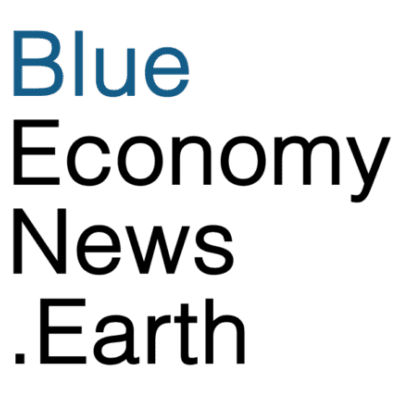German multinational financial services company Allianz has issued a report warning that unsustainable use of the ocean could have catastrophic economic impacts, with plastic pollution alone costing as much as USD$731 billion by 2050.
The report addressed the impacts of marine heat waves caused by climate change as well as industrial operations in the water—such as oil and gas installations, cables and offshore wind farms; degradation of coastal habitats; coastal runoff and other actions that threaten ecosystems and reduce biodiversity. It also suggested some measures to tackle these costs.
According to the report, plastic pollution not only interrupts maritime traffic but affects marine wildlife, fishing and aquaculture and coastal tourism. At current rates of production, the report states, it could lead to economic damages of $197 billion by 2030 and $434 billion by 2050. But if plastic production continues to increase, the economic cost could increase to $229 billion by 2030 and increase by nearly 70% by 2050.
The report said climate change has reduced the ocean’s capacity to sequester carbon by 7%. At the current EU ETS carbon price of €70/tCO2, it said, that would translate into an annual cost of €49.9 billion (USD$54.8 billion). But when evaluating the lost potential “at a higher and more realistic social cost” of carbon of €170/tCO2, this estimate increases to €121.2 billion per year.
The degradation of marine ecosystems also threatens terrestrial agriculture, since marine ecosystems play a critical role in regulating the hydrological cycle, which directly affects water quality and availability for arable crops.
When blue carbon sources, such as coastal wetlands, mangroves and seagrasses are degraded, they can no longer act as filters, so pollutants such as heavy metals and agricultural runoffs increase in freshwater sources used for irrigation. Eutrophication—the accumulation of nutrients such as nitrogen in a body of water—also occurs, leading to algal blooms that deplete oxygen levels and further compromise water quality. Algae blooms caused by eutrophication can result in damage to seagrass and impact fisheries as well as reduce tourism.
Marine habitats such as coral reefs and mangroves prevent coastal erosion. When they are degraded, nutrient-rich sediments that replenish agricultural soils are lost, removing topsoil and depositing saltwater and marine sediments onto arable land. This increases soil salinity and can lead to reduced crop growth and even, in some cases, to the soil becoming unusable. According to the Food and Agriculture Organization, 40% of the world’s land is already degraded; and the damage is increasing at an alarming rate.
Additionally the report said, coastal ecosystems save insurance companies approximately $52 billion annually by mitigating storm damage, flooding and erosion.
Industries involved in infrastructure builds – such as the industrial and energy sectors – have the highest impacts on marine ecosystems, the report said. Clearing the area for construction, drilling and dredging destroy ecosystems and biodiversity.
“Industrial processes such as construction activities, drilling for oil at sea and aquaculture contribute to the degradation of natural habitats, reducing biodiversity and natural capital, while byproducts such as drilling fluids, metal cuttings and accidental spillages introduce toxic chemicals into the environment,” the report said, “This is creating a vicious cycle, destroying the various natural capital assets that are so critical for industries.”
As other reports have noted, Sustainable Development Goal 14, Life Below Water, is by far the least funded of all the SDGs. To respond to that concern the report recommended several measures.
One is a “beneficiary pays” model. For example, in places like Lombok and Pulah Weh in Indonesia, where conservation of endangered shark species costs local fishing operations, tourists could be asked to pay a surcharge to cover the loss. The report said international tourists recently surveyed said they would be willing to pay an average of $10-15 per person per day to contribute towards community-based marine conservation projects. This could generate up to $6.8 million annually in Lombok and up to $900,000 annually in Pulau Weh, exceeding the estimated costs of community-based shark conservation in nearby fisheries.
The report also recommended an increase in public funding such as InvestEU Blue Economy Fund, public/private partnerships, conservation trust funds, insurance incentives, blue bonds and debt-for-nature swaps.

